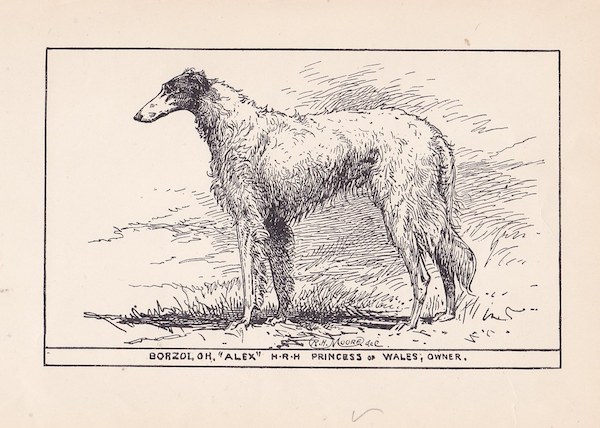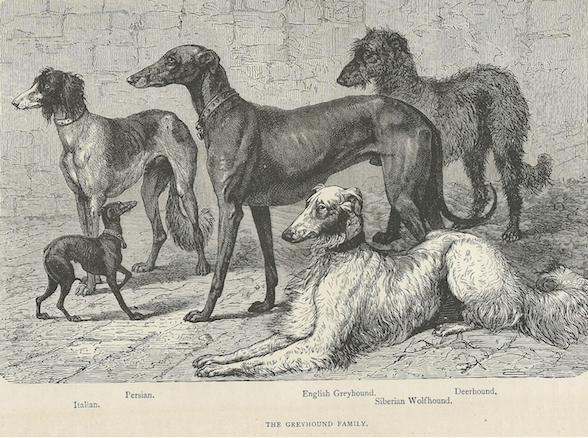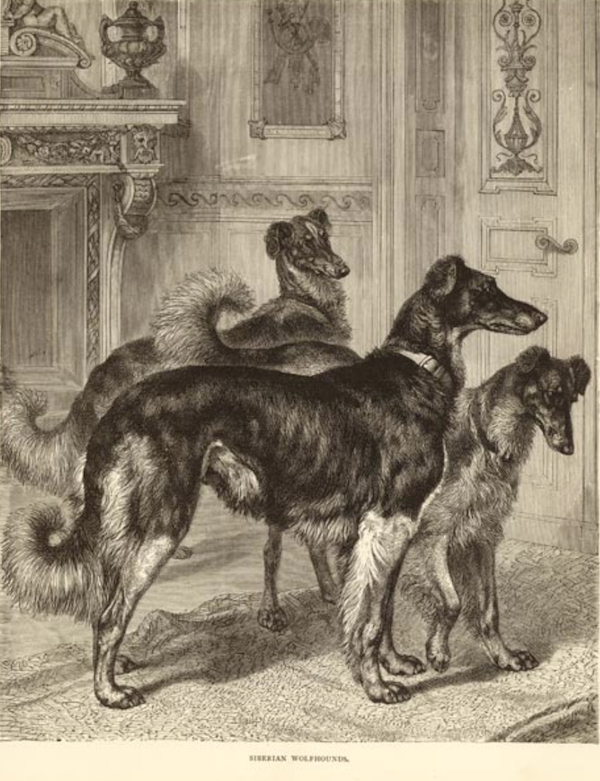
It can be baffling to today’s student of dogs when a breed not easily mistaken for any other breed should have had so many names in its history. Today, we know the dog seen were as a Borzoi, a name it didn’t get until 1936, but only after a raging debate in the 1920s and early 30s among breed fanciers, some of whom had been calling the breed Russian Wolfhound.
In series of letters to friends, Joseph B. Thomas complained that the term, “wolfhound,” was a misnomer brought into official use around 1890 on the suggestion of a well known judge, James Watson, because of a controversy among certain fanciers about the names “Borzoi” and “Psovoi.” The word, Borzoi,” was the masculine singular form of an archaic Russian adjective, borzoy, which literally means, “swift, quick, or fast.” It fit.
Louis Murr, the AKC Gazette breed columnist, however, was an advocate of keeping “Wolfhound” in the breed’s name and insisted that “any sane breeder can see why the name Russian wolfhound should be retained.” Why? In Murr’s words, “’Russian wolfhound’… spells romance and exactly fits the breed. It describes the dog as a hunter of wolves and refers to the country from which it came and where it was used for hunting. To say ‘Russian wolfhound’ brings to mind an actual picture of life in Russia, and we can easily imagine how these animals appeared in the hunt.” He had more to say about the subject, but in the interest of brevity, we will add only Murr’s additional thought: “Etymologically, ‘Russian wolfhound’ is correct, and this name should be retained. ‘Borzoi’ means nothing to the average mind; even if it did, why take the romance out of the breed?”
Evidently, the AKC didn’t have a romantic bone in its body, figuratively speaking, because when it recognized the breed, Borzoi was its official breed name. The only other controversy left was to determine the plural form “Borzoi” or “Borzois”? The matter was settled when the Borzoi Club of America and the Borzoi Club in the UK both indicated their preference that Borzoi be both the singular and plural form. As an aside, in modern Russian, the Borzoi is officially known as russkaya psovaya borzaya.
Before all the fuss, an even earlier name in the UK for the Borzoi was “Siberian Wolfhound.” The name got around because of the lithograph seen below.

The rendering created in Germany in 1876 by Leopold Joseph Franzjohann Fitzinger was a much travelled image that showed the breed listed as the Siberian Wolfhound. The lithograph was originally published in “Der Hund und Seine Racen,” but five years later, it was also published in UK dog books where it was seen by even more people.
As you can see below, it wasn’t the only piece of art listing the breed as a Siberian Wolfhound:

This image appeared in The Book of the Dog by Vero Shaw published in 1881. Around this time, an occasional specimen was shown in variety classes, and it was generally catalogued as a Siberian Wolfhound. It’s not a huge leap to assume that because Siberia had been part of modern Russia since the latter half of the 16th century, a dog from that country would be given that moniker, nor why it would also be known as the Russian Hunting Sighthound since it was a sighthound that hunted. For anyone wondering why in 1936 the name was changed at all, it was done to conform what what the rest of the world was calling the breed.
Top image: “Borzoi print” by Muzik Hounds is licensed under CC BY-NC 2.0
